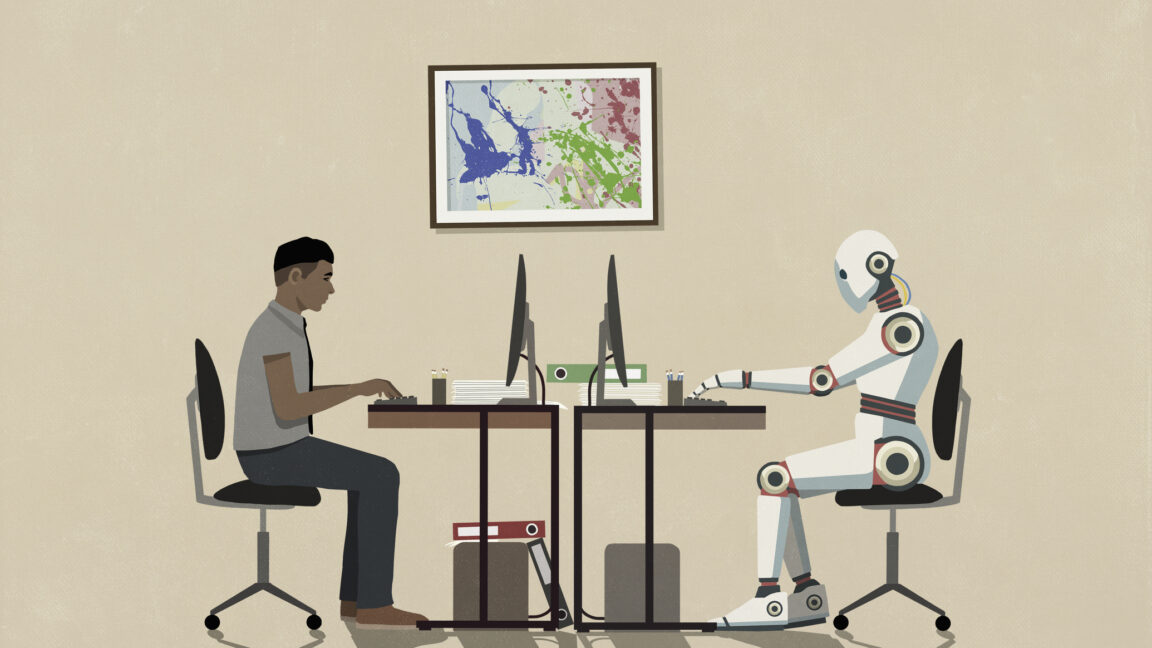Gartner Predicts AI to Power All IT Work by 2030

Key Points
- Gartner predicts AI will be part of every IT task by 2030.
- Currently, 81% of IT work proceeds without AI.
- 25% of future IT workloads are expected to be fully automated by bots.
- 75% will involve humans working alongside AI.
- Only 1% of existing IT job losses are linked to AI.
- Entry‑level IT positions face the greatest risk of displacement.
- Highly AI‑exposed entry‑level jobs have declined over 40% in recent years.
- Potential workforce impact of widespread AI is estimated at 6‑7%, but viewed as transitory.
Gartner analysts forecast that by 2030 every IT task will involve artificial intelligence, a shift from today’s 81 percent of work that proceeds without AI. They anticipate that a quarter of IT workloads will be fully automated by bots, while the majority will be performed by humans aided by AI. Despite the automation surge, Gartner sees limited job displacement, noting only 1 percent of current IT job losses stem from AI and warning that entry‑level positions may feel the greatest impact. The firm argues the overall effect will be transitional rather than catastrophic.
AI Set to Encompass All IT Functions by 2030
Gartner’s senior analysts announced that by the end of the decade every activity performed by an information‑technology department will incorporate artificial‑intelligence technologies. Today's landscape, they note, sees roughly 81 percent of IT work carried out without any AI assistance. The projection marks a dramatic pivot toward pervasive AI integration across the sector.
Automation Mix: Bots and Human‑AI Collaboration
Within the forecasted environment, Gartner expects 25 percent of IT workloads to be executed entirely by autonomous bots, eliminating the need for direct human involvement. The remaining 75 percent of tasks will still involve human operators, but these workers will rely heavily on AI tools to augment their productivity and decision‑making.
Impact on Employment
Contrary to concerns about a sweeping AI‑driven job purge, Gartner emphasizes that AI is not poised to create a mass “jobs bloodbath.” Current data shows only about 1 percent of IT job losses are directly attributable to AI. However, the firm cautions that entry‑level positions could be the most vulnerable, as automation takes over routine functions traditionally filled by newcomers to the field.
Supporting this view, a labor‑research firm observed a more than 40 percent decline in highly AI‑exposed entry‑level jobs over a recent multi‑year period. Additionally, broader forecasts suggest that if AI becomes widely adopted, it could affect roughly 6 to 7 percent of the U.S. workforce, though the impact is expected to be temporary as new roles emerge.
Industry Outlook
Gartner’s analysts argue that the shift toward AI‑infused IT work is inevitable and that professionals will need to become proficient with AI tools to remain relevant. While automation will reshape certain job categories—especially at the entry level—the overall transformation is portrayed as a transition rather than a crisis, with AI serving as a catalyst for new opportunities and efficiencies within the IT landscape.